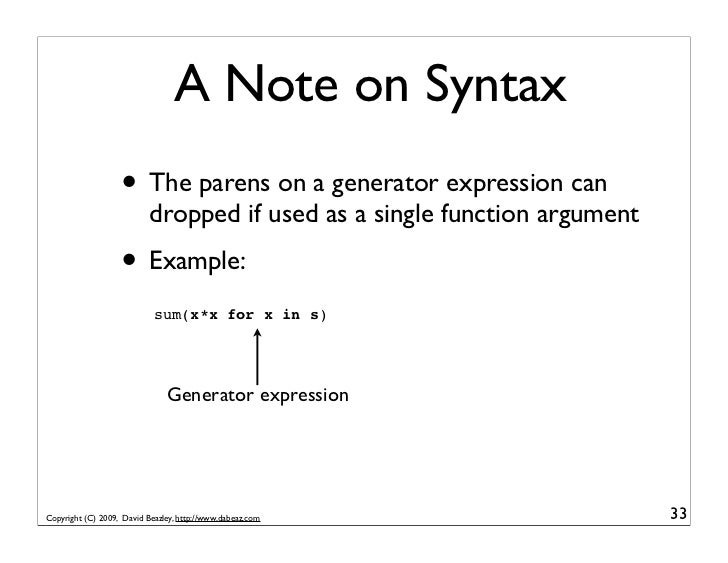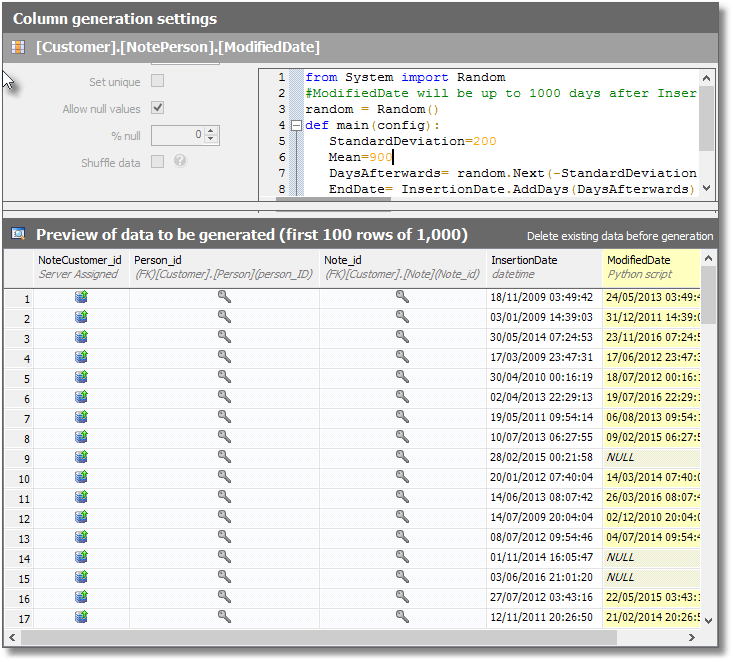Python generators are a simple way of creating iterators. All the overhead we mentioned above are automatically handled by generators in Python. Simply speaking, a generator is a function that returns an object (iterator) which we can iterate over (one value at a time). How to generate a secret key with Python. GitHub Gist: instantly share code, notes, and snippets. ('Cisco IOU License Generator - Kal 2011, python port of 2006 C.
- Drop A Key In Python Generator Download
- Drop A Key In Python Generator Reviews
- Drop A Key In Python Generator Code
Dec 13, 2016 Listing 2: Python Script for Enddate column in Phone table. Here we have a script that imports the Random class from.NET, creates a random number generator and then creates an end date that is between 0 and 99 days after the start date. Half of the resulting rows use a NULL instead. Paste that into SDG as the script for the python generator to use, and the results should look similar to.
-->In this quickstart, you learn to manage blobs by using Python. Blobs are objects that can hold large amounts of text or binary data, including images, documents, streaming media, and archive data. You'll upload, download, and list blobs, and you'll create and delete containers.
Prerequisites
- An Azure account with an active subscription. Create an account for free.
- An Azure Storage account. Create a storage account.
- Python.
- Azure Storage SDK for Python.
Drop A Key In Python Generator Download
Note
The features described in this article are now available to accounts that have a hierarchical namespace. To review limitations, see the Known issues with Azure Data Lake Storage Gen2 article.
Download the sample application
The sample application in this quickstart is a basic Python application.
Use the following git command to download the application to your development environment.
To review the Python program, open the example.py file at the root of the repository.
Copy your credentials from the Azure portal
The sample application needs to authorize access to your storage account. Provide your storage account credentials to the application in the form of a connection string. To view your storage account credentials:

In to the Azure portal go to your storage account.
In the Settings section of the storage account overview, select Access keys to display your account access keys and connection string.
Note the name of your storage account, which you'll need for authorization.
Find the Key value under key1, and select Copy to copy the account key.
Configure your storage connection string
In the application, provide your storage account name and account key to create a BlockBlobService object.
Open the example.py file from the Solution Explorer in your IDE.
Replace the
accountnameandaccountkeyvalues with your storage account name and key:Save and close the file.
Run the sample
The sample program creates a test file in your Documents folder, uploads the file to Blob storage, lists the blobs in the file, and downloads the file with a new name.
Install the dependencies:
Go to the sample application:
Run the sample:
You’ll see messages similar to the following output:
Before you continue, go to your Documents folder and check for the two files.
- QuickStart_<universally-unique-identifier>
- QuickStart_<universally-unique-identifier>_DOWNLOADED
You can open them and see they're the same.
You can also use a tool like the Azure Storage Explorer. It's good for viewing the files in Blob storage. Azure Storage Explorer is a free cross-platform tool that lets you access your storage account info.
After you've looked at the files, press any key to finish the sample and delete the test files.
Learn about the sample code
Now that you know what the sample does, open the example.py file to look at the code.
Get references to the storage objects
In this section, you instantiate the objects, create a new container, and then set permissions on the container so the blobs are public. You'll call the container quickstartblobs.
First, you create the references to the objects used to access and manage Blob storage. These objects build on each other, and each is used by the next one in the list.
Instantiate the BlockBlobService object, which points to the Blob service in your storage account.
Instantiate the CloudBlobContainer object, which represents the container you're accessing. The system uses containers to organize your blobs like you use folders on your computer to organize your files.
Once you have the Cloud Blob container, instantiate the CloudBlockBlob object that points to the specific blob that you're interested in. You can then upload, download, and copy the blob as you need.
Important
Container names must be lowercase. For more information about container and blob names, see Naming and Referencing Containers, Blobs, and Metadata.
Upload blobs to the container
Blob storage supports block blobs, append blobs, and page blobs. Block blobs can be as large as 4.7 TB, and can be anything from Excel spreadsheets to large video files. You can use append blobs for logging when you want to write to a file and then keep adding more information. Page blobs are primarily used for the Virtual Hard Disk (VHD) files that back infrastructure as a service virtual machines (IaaS VMs). Block blobs are the most commonly used. This quickstart uses block blobs.
To upload a file to a blob, get the full file path by joining the directory name with the file name on your local drive. You can then upload the file to the specified path using the create_blob_from_path method.
Drop A Key In Python Generator Reviews
The sample code creates a local file the system uses for the upload and download, storing the file the system uploads as full_path_to_file and the name of the blob as local_file_name. This example uploads the file to your container called quickstartblobs:
There are several upload methods that you can use with Blob storage. For example, if you have a memory stream, you can use the create_blob_from_stream method rather than create_blob_from_path.

List the blobs in a container
The following code creates a generator for the list_blobs method. The code loops through the list of blobs in the container and prints their names to the console.
Download the blobs
Download blobs to your local disk using the get_blob_to_path method.The following code downloads the blob you uploaded previously. The system appends _DOWNLOADED to the blob name so you can see both files on your local disk.
Clean up resources
If you no longer need the blobs uploaded in this quickstart, you can delete the entire container using the delete_container method. To delete individual files instead, use the delete_blob method.
Resources for developing Python applications with blobs
For more about Python development with Blob storage, see these additional resources:
Binaries and source code
- View, download, and install the Python client library source code for Azure Storage on GitHub.
Client library reference and samples
- For more about the Python client library, see the Azure Storage libraries for Python.
- Explore Blob storage samples written using the Python client library.
Next steps
Drop A Key In Python Generator Code
In this quickstart, you learned how to transfer files between a local disk and Azure Blob storage using Python.
For more about the Storage Explorer and Blobs, see Manage Azure Blob storage resources with Storage Explorer.